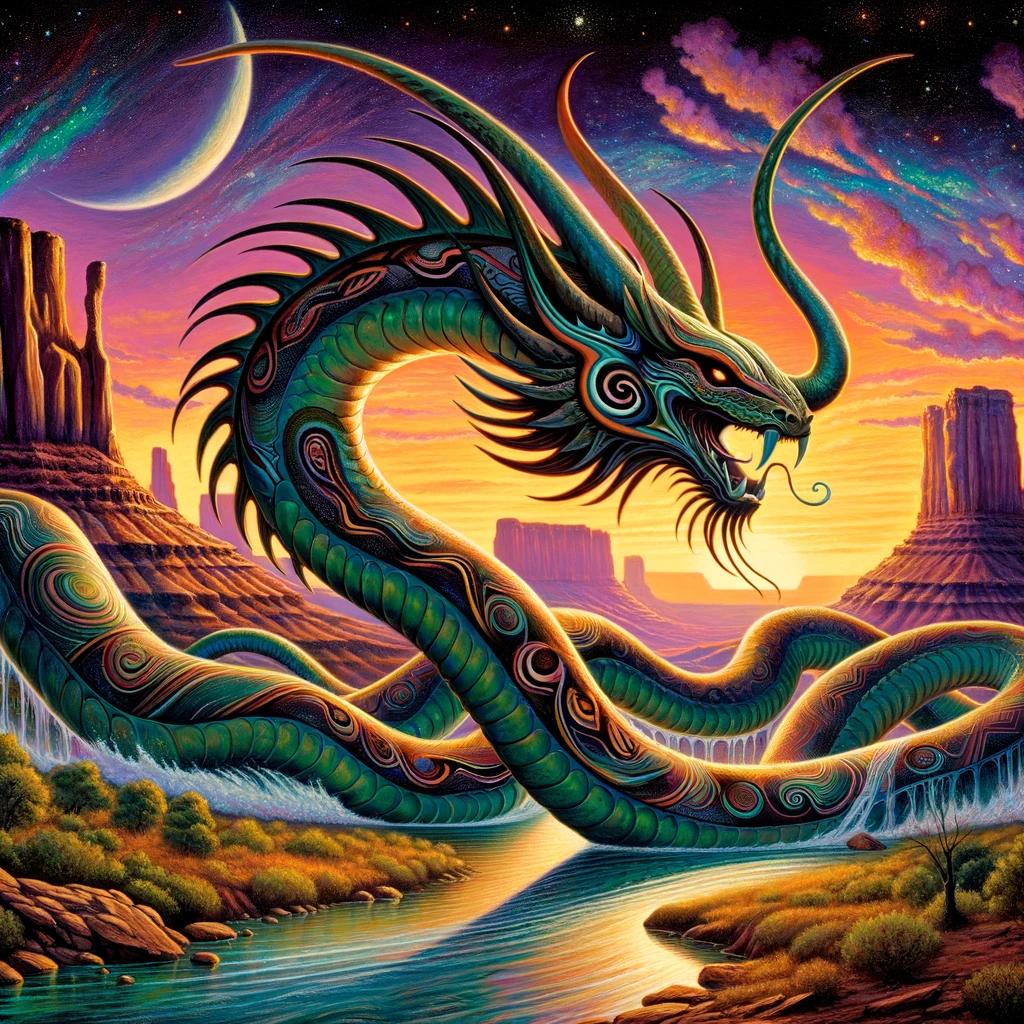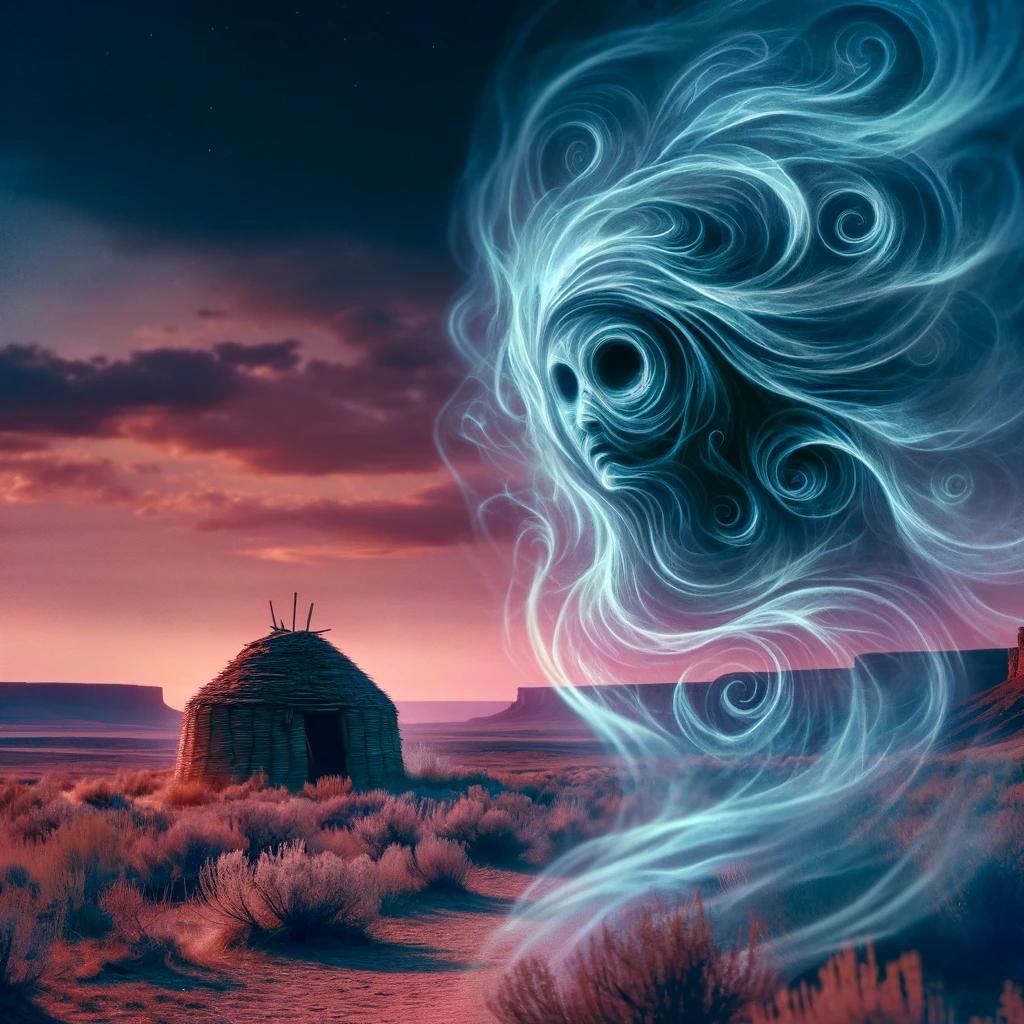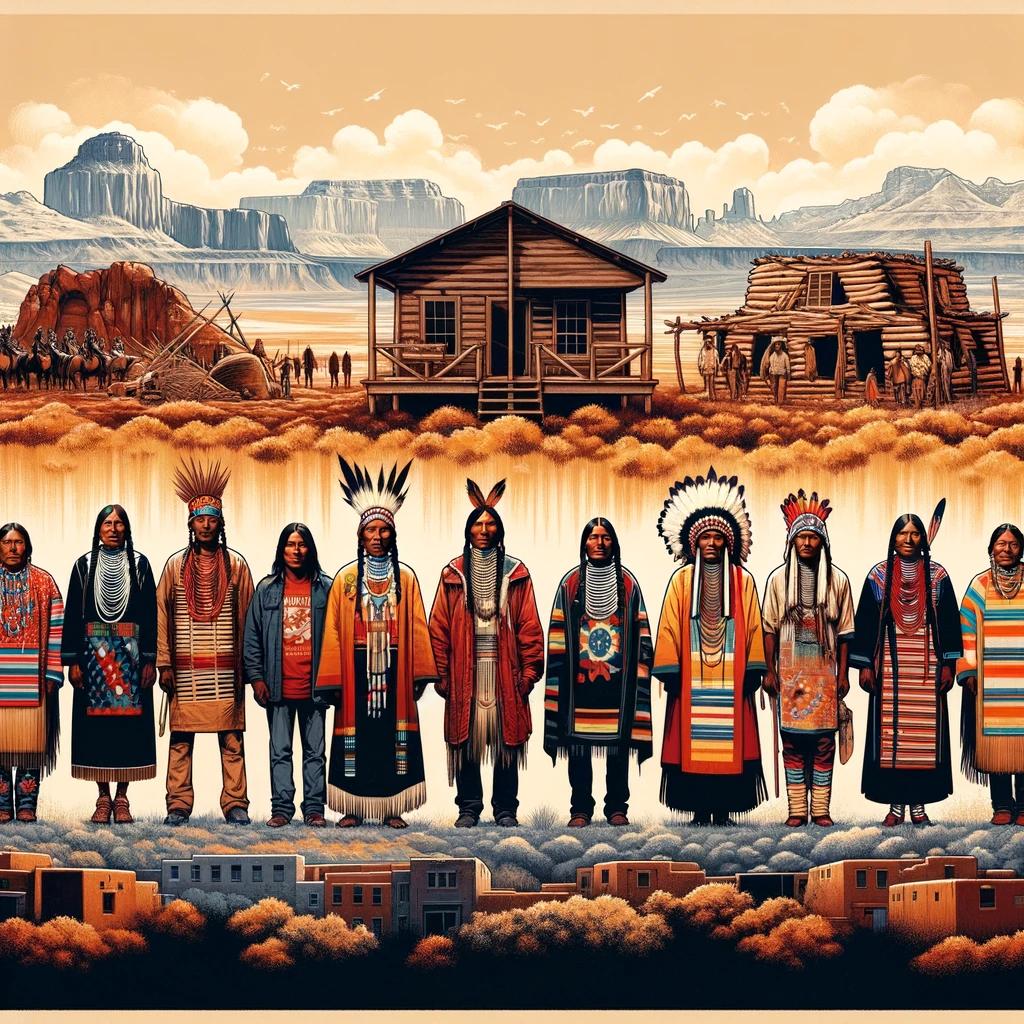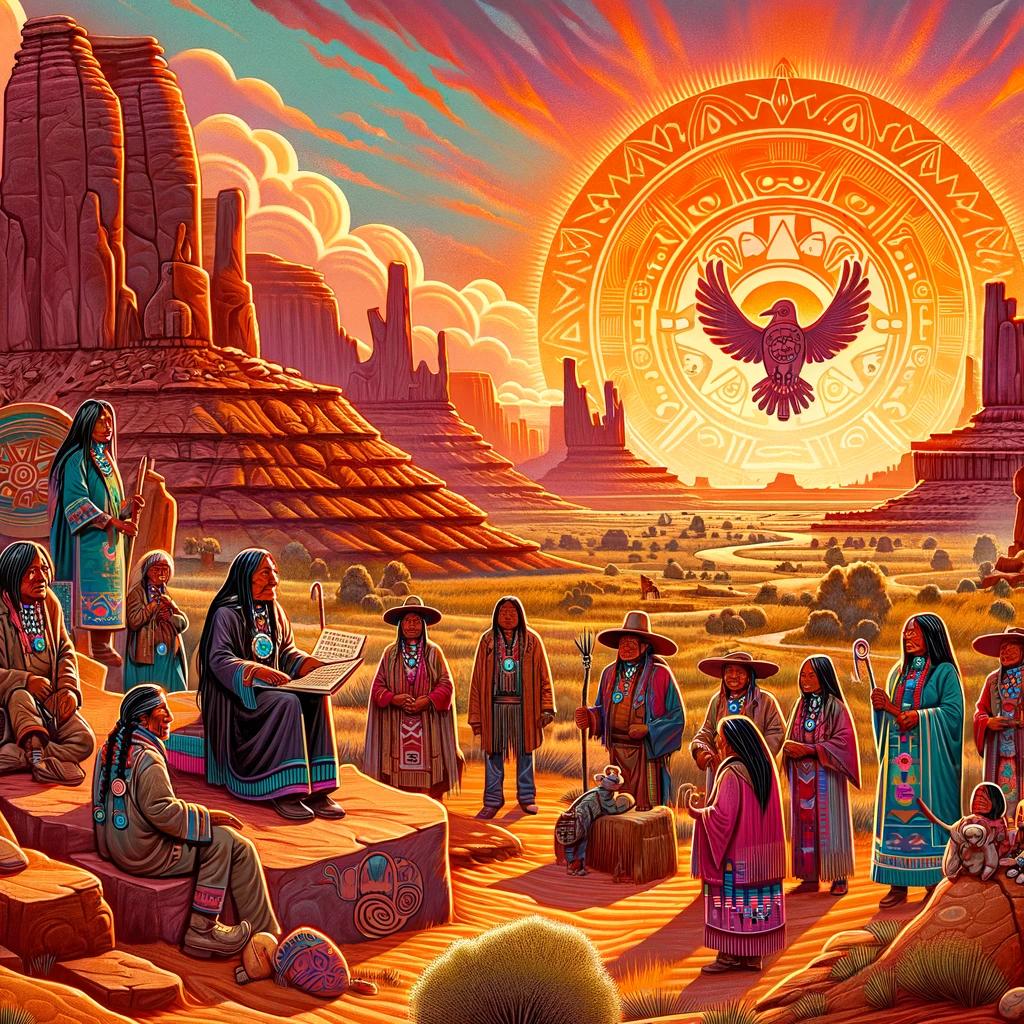Navajo Holy People: Sacred Deities of the Navajo Nation
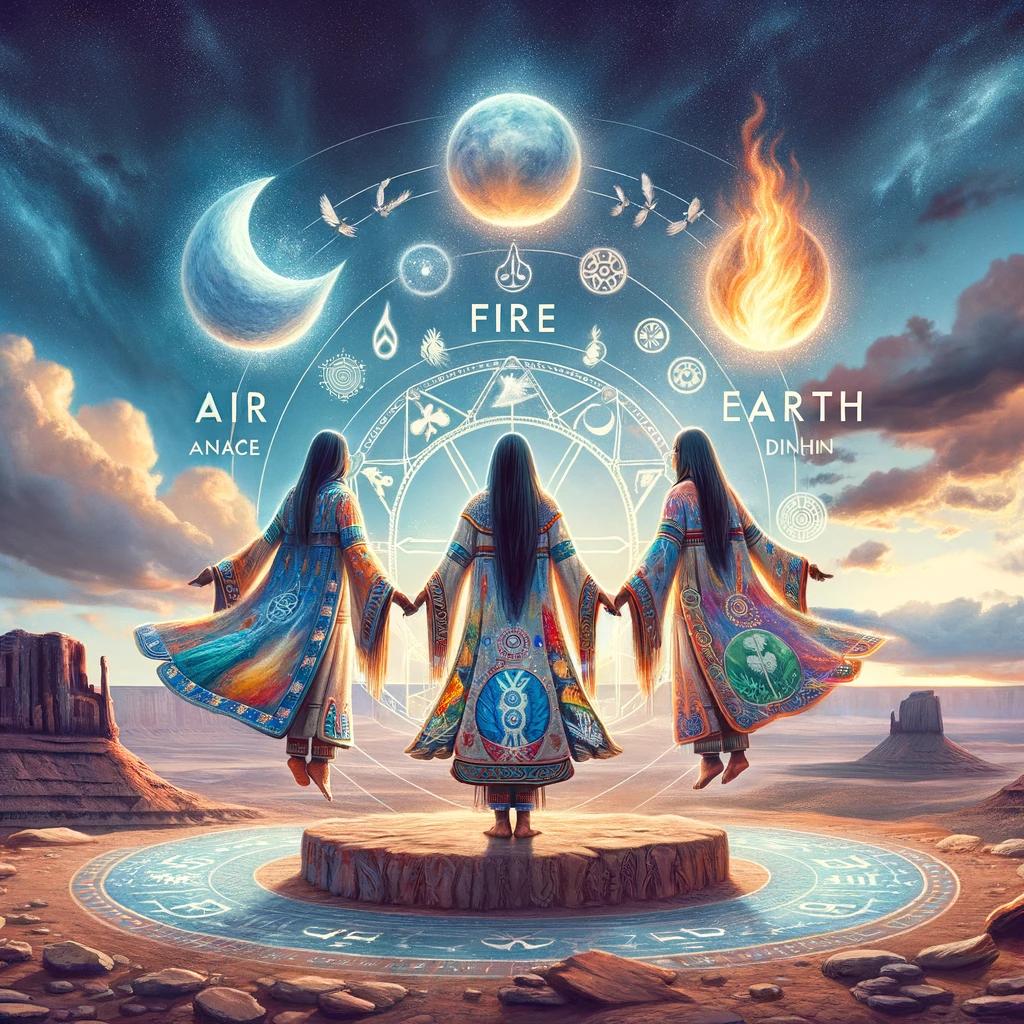
The Navajo Holy People hold immense spiritual significance within the Navajo culture. They play a pivotal role in Navajo mythology and are revered as guardians of wisdom and guidance.
From their influential presence in traditional ceremonies to their portrayal in Navajo art and media, the Holy People continue to maintain their relevance in contemporary Navajo society. Additionally, the Navajo philosophy of hózhó, emphasizing beauty and harmony, permeates their spiritual connection with the Holy People.
This article aims to explore the enduring legacy and cultural importance of the Navajo Holy People, shedding light on their profound influence within and beyond the Navajo tribe.
The Navajo Nation: A Rich Cultural Legacy
History and Origins of the Navajo Tribe
The Navajo Nation boasts a rich and vibrant history that is deeply rooted in their ancestral origins.
Believed to have migrated to the Southwest region of the United States around the 14th century, the Navajo people have a centuries-old legacy of resilience, adaptability, and cultural preservation. Their origins can be traced back to the Athabaskan-speaking people who lived in present-day Northwestern Canada and Alaska.
Through a series of migrations, they eventually settled in the Southwest, forming what is now known as the Navajo Tribe.
Significance and Influence of the Navajo Language
The Navajo language holds immense cultural and historical significance within the Navajo Nation. As a complex and intricate language, it reflects the deep-rooted traditions, values, and spirituality of the Navajo people.
The Navajo language plays a crucial role in preserving and passing down cultural knowledge, oral histories, and sacred ceremonies from one generation to another. It also serves as a strong unifying force in the tribe, fostering a sense of identity, belonging, and cultural pride among Navajo individuals.
Furthermore, the Navajo language’s influence extends beyond the tribe itself. It has provided linguistic and cultural contributions to the broader Native American community and has been recognized as one of the most widely spoken indigenous languages in the United States.
Its preservation and revitalization efforts are essential in maintaining the Navajo people’s cultural legacy and ensuring the endurance of their rich linguistic heritage.
- The Navajo Tribe traces its origins back to the Athabaskan-speaking people from Northwestern Canada and Alaska.
- The Navajo language plays a crucial role in preserving cultural knowledge and fostering a sense of identity.
- The Navajo language has influenced the broader Native American community and is recognized as one of the most widely spoken indigenous languages in the United States.
Navajo Holy People: Guardians of Spiritual Wisdom
The Navajo Holy People play a crucial role in the spiritual and cultural life of the Navajo tribe.
They are revered as guardians of spiritual wisdom, guiding the Navajo people in their understanding of the universe and their connection to the divine.
The Role of Holy People in Navajo Mythology
In Navajo mythology, Holy People are considered divine beings who participated in the creation of the world and all living beings.
They possess immense knowledge and power, and their actions and teachings shape the Navajo belief system. Each Holy Person represents a specific aspect of the natural and spiritual realms, contributing to the harmony and balance of the universe.
The Holy People are often depicted as intermediaries between the physical and spiritual realms, communicating with humanity and assisting in matters of healing, protection, and guidance. They provide the Navajo people with spiritual teachings, ethical principles, and cultural traditions, serving as role models for living a good, balanced life.
Navajo Holy People in Traditional Ceremonies
The presence of the Holy People is deeply woven into the fabric of Navajo ceremonial life. Traditional ceremonies, such as the Blessingway and the Enemyway, are centered around honoring and connecting with these sacred beings.
Blessingway Ceremony
Enemyway Ceremony
The Blessingway Ceremony is one of the most significant Navajo ceremonies, aimed at promoting harmony, good health, and personal growth. It involves elaborate rituals and prayers dedicated to the Holy People, seeking their blessings for the individual’s well-being and spiritual development.
The Enemyway Ceremony focuses on healing and restoration after experiencing hardship or encountering negative influences. It involves various rituals aimed at cleansing and reconnecting with the Holy People, who are believed to provide protection, strength, and guidance in times of adversity.
These ceremonies serve as opportunities for the Navajo people to express their gratitude, seek spiritual guidance, and reinforce their cultural identity. They demonstrate the enduring significance and reverence bestowed upon the Navajo Holy People within the tribe.
Through their role in Navajo mythology and their presence in traditional ceremonies, the Navajo Holy People continue to shape and inspire the spiritual beliefs and practices of the Navajo people, guiding them towards a harmonious and meaningful existence.
The Sacred Status of Navajo Women
Navajo women hold a revered position within Navajo society, encompassing both mythological significance and vital contributions to the tribe. Understanding the sacred status of Navajo women requires exploring their roles in Holy People mythology as well as their integral contributions to the Navajo community.
Navajo Women in Holy People Mythology
In Navajo mythology, women play crucial roles as Holy People who possess extraordinary powers and wisdom. From Changing Woman, the matriarchal deity associated with the cycle of life, to her daughters, the Yolkai Estsan (First Woman), and the Nádleehi (Changing Ones), female figures symbolize fertility, nurturing, and strength.
Women in Navajo mythology are often associated with elements of creation, such as the creation of rivers and mountains. Through their actions and connections to the Holy People, Navajo women embody the divine feminine and are revered for their spiritual essence.
Contributions and Roles of Navajo Women in the Tribe
Beyond their mythological significance, Navajo women have made significant contributions to the tribe throughout history. They have played key roles in various aspects of Navajo life, including preserving cultural traditions, passing down oral history, and upholding the values and teachings of the community.
Navajo women are skilled artisans, known for their expertise in crafting exquisite jewelry, textiles, and pottery, which contribute to the vibrant cultural heritage of the Navajo Nation. They have also been influential leaders, advocating for the rights and well-being of their people.
Furthermore, Navajo women have been instrumental in maintaining the social fabric of the tribe, being the backbone of families and communities. Their nurturing role emphasizes the values of respect, harmony, and unity within Navajo society.
Despite historical challenges and shifting societal dynamics, Navajo women continue to demonstrate resilience and strength, preserving their ancestral traditions while embracing opportunities for personal and collective growth.
Unveiling the Secrets of the First Talkers
The First Talkers hold a significant place in Navajo creation narratives, symbolizing the origins of communication and language.
According to Navajo mythology, the Holy People graciously imparted the gift of speech to the Navajo people through the First Talkers. These revered beings served as intermediaries between the spiritual and physical realms, bestowing upon the Navajo the power of language and the ability to express their thoughts and emotions.
The First Talkers in Navajo Creation Narratives
In Navajo creation narratives, the First Talkers played a pivotal role in shaping the world. From the emergence of the Navajo people from the Underworld to their journey through various worlds, the First Talkers guided and taught the Navajo through their words.
They introduced the significance of language, storytelling, and the power of words in establishing connections, preserving history, and passing down cultural knowledge.
The Navajo creation narratives describe the First Talkers as wise and insightful, bringing forth the essence of harmony and balance through their teachings.
Their guidance demonstrated the importance of communication in maintaining relationships, resolving conflicts, and fostering unity within the Navajo community.
The Importance and Teachings of the First Talkers
The teachings of the First Talkers encompassed more than just linguistic abilities. They instilled essential values within the Navajo people, emphasizing respect, gratitude, and stewardship of the Earth. The First Talkers taught the Navajo the significance of maintaining a balanced relationship with nature and acknowledging the interconnectedness of all living beings.
Their teachings encouraged the Navajo to express themselves honestly and authentically, valuing the power of words to convey emotions, thoughts, and intentions. Through their guidance, the First Talkers highlighted the responsibility of the Navajo people to use their words wisely and foster harmony in their interactions with others and the world around them.
The legacy of the First Talkers continues to resonate within the Navajo community, as language remains a foundational pillar of Navajo culture. The Navajo people hold great reverence for the gift of speech and the ongoing importance of communication in preserving their heritage, traditions, and spiritual connection to the Holy People.
Overall, the First Talkers in Navajo creation narratives represent the origins of language and the invaluable teachings they bestowed upon the Navajo people. Their wisdom, guidance, and lessons on communication and respect continue to shape the Navajo community’s identity, fostering a deep appreciation for language as a sacred gift from the Holy People.
Exploring the Spiritual Connection with Holy People
Rituals and Practices for Communing with Holy People
Navajo culture embraces a rich array of rituals and practices that foster a spiritual connection with the Holy People. Ceremonies, such as the Blessingway and the Nightway, serve as platforms for individuals to engage with the divine beings.
These rituals involve intricate chants, prayers, and sacred dances performed by skilled practitioners, known as hataalii. Through the use of meticulously crafted sand paintings and the burning of sacred herbs, such as sage and sweetgrass, the Navajo community seeks blessings and guidance from the Holy People.
Additionally, the sweat lodge ceremony, known as Nádleehi, provides a purification experience that aims to cleanse both the body and spirit. Participants endure heated steam while praying and meditating, seeking renewal and a deeper spiritual connection.
The sweat lodge ceremony serves as an important opportunity for individuals to commune directly with the Holy People, sharing their hopes, fears, and gratitude.
Navajo Beliefs and Experiences with Holy People
Central to Navajo belief is the idea that the Holy People are actively present in the physical and spiritual realms, guiding and protecting the Navajo people.
The belief in a sacred spiritual world, intertwined with the physical world, shapes their perspectives and daily lives. Navajo individuals often recount personal experiences and interactions with the Holy People, sharing encounters filled with awe, wisdom, and blessings.
Navajo elders play a crucial role in passing down these stories, ensuring that the knowledge of the Holy People and their teachings remain alive within the community. They serve as reservoirs of traditional wisdom, reminding the younger generations of the sacredness of their connection to the Holy People and the importance of respecting and upholding Navajo traditions.
- Navajo individuals often seek visions and dreams as a means of communicating with the Holy People, believing that these spiritual encounters offer guidance and insights into their lives. The interpretation of dreams and visions is a revered practice, with the understanding that they hold messages from the divine.
- A deep sense of reverence and gratitude towards the Holy People resonates within the Navajo community, as they acknowledge the sacredness of their existence and the power they possess.
Expressions of gratitude, prayers, and offerings are common ways in which individuals show their respect and acknowledge the constant presence of the Holy People.
In conclusion, the Navajo people cherish a profound spiritual connection with the Holy People, carrying out rituals and practices that allow for communion and communication with these revered beings.
Through sacred ceremonies, personal experiences, and the passing down of generations, the Navajo community sustains their rich spiritual traditions and beliefs in the presence and guidance of the Holy People.
Navajo Holy People: Contemporaneous Relevance and Legacy
Holy People Traditions in the Modern Navajo Nation
Modern-day Navajo society maintains a deep connection with the Holy People, upholding sacred traditions that have been passed down through generations.
Navajo individuals and communities continue to partake in rituals, ceremonies, and practices that embody the teachings and reverence for the Holy People. These traditions serve as a spiritual compass, guiding Navajo people in navigating the complexities of the contemporary world with a sense of purpose and harmony.
Navajo Holy People traditions encompass various aspects of Navajo life, including healing practices, agricultural ceremonies, and seasonal rituals. They provide a framework for maintaining balance and well-being within the Navajo community.
The continuation of these traditions reinforces the spiritual and cultural resilience of the Navajo people, reminding them of their shared history and the wisdom embedded in their ancestral heritage.
Healing Practices and Rituals
- The Navajo Hataalii, or traditional healer, plays a vital role in maintaining the well-being of individuals and the community.
Through their deep understanding of Navajo spiritual practices and connection with the Holy People, Hataalii employ ceremonies, prayers, and herbal remedies to restore physical, mental, and spiritual balance.
- Ceremonies such as the Blessingway and Night Chant are performed to heal ailments, offer protection, and nurture hózhó.
These rituals involve prayers, songs, and intricate sand paintings, serving as a conduit for communication with the Holy People and seeking their blessings and guidance.
Agricultural Ceremonies and Seasonal Traditions
- Navajo Holy People traditions also encompass agricultural ceremonies, honoring the interconnectedness between nature, the Holy People, and the sustenance of the Navajo people.
Rituals such as the Corn Pollen Blessing and Planting Blessing invoke the Holy People’s assistance in ensuring bountiful harvests and maintaining a harmonious relationship with the land.
- Seasonal traditions, such as the winter solstice and summer ceremonies, mark important milestones in the Navajo calendar.
These ceremonies celebrate the cyclical nature of life, express gratitude to the Holy People, and reinforce the Navajo spiritual connection to the natural world.
Preserving and Honoring the Legacy of Navajo Holy People
Preserving and honoring the legacy of the Navajo Holy People is of paramount importance within the Navajo community.
Efforts are made to pass down traditional knowledge, practices, and stories from one generation to the next, ensuring the continuity of the sacred teachings.
Navajo elders, revered for their wisdom and experience, play a crucial role in imparting knowledge about the Holy People to younger generations.
They serve as the guardians of cultural heritage, sharing sacred narratives, legends, and rituals, thereby keeping the spiritual connection with the Holy People alive.
Oral Tradition and Storytelling
The Navajo tradition of oral storytelling serves as a powerful means of preserving and passing down knowledge about the Holy People. Through myths, legends, and narratives, the wisdom and lessons of the Holy People are woven into the fabric of Navajo culture.
Storytellers employ vivid imagery and symbolism, capturing the imaginations of listeners and connecting them to the profound spiritual significance of the Holy People.
Cultural Institutions and Education
Cultural institutions, such as Navajo museums and educational programs, also contribute to the preservation and honoring of the legacy of the Navajo Holy People. These institutions provide spaces for the display and interpretation of Navajo art, artifacts, and sacred objects, fostering a deeper understanding and appreciation of the spiritual traditions associated with the Holy People.
Education plays an integral role in perpetuating the knowledge and reverence for the Navajo Holy People. Navajo schools, colleges, and community programs incorporate teachings about the Holy People into curricula, ensuring that future generations are equipped with a comprehensive understanding of their cultural heritage and spiritual connection.
The traditions associated with the Navajo Holy People continue to be valued and celebrated, not merely as relics of the past, but as living embodiments of Navajo spirituality and identity in the modern world.
Nurturing Hózhó: Navajo Philosophy of Beauty and Harmony
The Navajo people deeply value the concept of hózhó, which encompasses beauty, harmony, balance, and overall well-being. This philosophy is integral to their culture and way of life, guiding their interactions with the world and each other.
Understanding Hózhó in Navajo Culture
In Navajo culture, hózhó represents the pursuit of a harmonious existence and a balanced relationship with all aspects of life. It encompasses physical, mental, emotional, and spiritual well-being, emphasizing the interconnectedness of all things.
Hózhó is reflected in the Navajo worldview, which recognizes the inherent beauty and wisdom present in nature, as well as the importance of maintaining equilibrium in one’s daily actions. It invites individuals to embrace their responsibilities and express gratitude for existence.
Furthermore, hózhó encourages humility and respect towards others, recognizing the significance of interconnected relationships within Navajo society. This philosophy shapes their interactions, fostering a sense of community and shared responsibility.
Incorporating Hózhó in Daily Life for Well-being and Equilibrium
For the Navajo people, nurturing hózhó involves incorporating its principles into everyday life.
This is achieved through various practices and rituals that help maintain a state of balance and cultivate well-being.
- Living in harmony with nature: The Navajo strive to live in alignment with the natural world, respecting and protecting the earth and its resources.
They believe that by maintaining a harmonious relationship with nature, they can experience personal and communal well-being.
- Honoring ancestors and traditions: Navajo individuals honor their ancestors and follow the teachings and values passed down through generations.
By upholding their cultural practices and traditions, they ensure the preservation of hózhó and its teachings.
- Practicing self-reflection and self-improvement: Navajo individuals engage in self-reflection and introspection to align their actions with hózhó’s principles.
They continuously strive for personal growth and development, seeking to contribute positively to their community.
- Promoting harmony in relationships: Navajo people cultivate harmonious relationships by valuing respect, compassion, and communication. They prioritize resolving conflicts peacefully and maintaining a sense of balance and understanding in their interactions.
By incorporating hózhó into their daily lives, the Navajo people aspire to lead fulfilling and purposeful existences, promoting the well-being of their community and fostering a sense of harmony within themselves and the world around them.
Navajo Holy People in Popular Culture and Art
Navajo Holy People have a prominent presence in popular culture and art, serving as a source of inspiration for countless creative expressions. Their portrayal in Navajo art showcases the deep reverence and spiritual connection that the Navajo people have with these divine beings.
Representation of Holy People in Navajo Art
Navajo art is renowned for its intricate details and vibrant colors, often depicting the Holy People in various forms. Paintings, weavings, pottery, and jewelry feature intricate designs that represent specific Holy People and their attributes.
These art forms not only celebrate the sacredness of the Holy People but also serve as a means of preserving and passing down their stories and teachings to future generations.
Navajo Holy People in Films, Literature, and Media
The influence of Navajo Holy People extends beyond traditional art forms and permeates the realms of films, literature, and media.
Numerous movies, documentaries, and television shows have portrayed the significance of the Holy People and their impact on Navajo culture. Their stories, mythology, and teachings have also served as inspiration for various literary works, offering readers a glimpse into the spiritual and cultural richness of Navajo traditions.
Furthermore, the Navajo Holy People have found a place in contemporary media, with their inclusion in video games, music, and even fashion. This recognition and appreciation of the Holy People in popular culture not only sheds light on their enduring legacy but also fosters a greater understanding and respect for Navajo spirituality among a wider audience.
Through art and representation in popular culture, the Navajo Holy People continue to thrive and inspire, ensuring that their wisdom and significance are celebrated and cherished in the modern world.
Protecting Navajo Heritage: Challenges and Preservation Efforts
Preserving the rich cultural heritage of the Navajo tribe is an ongoing endeavor that faces various challenges and requires consistent preservation efforts.
This section delves into the initiatives undertaken to protect the heritage of the Navajo Holy People, encompassing both cultural preservation initiatives and contemporary issues faced in maintaining Navajo traditions.
Cultural Preservation Initiatives for Navajo Holy People
Recognizing the significance of Navajo Holy People in the tribe’s identity, cultural preservation initiatives have been established to safeguard their traditions and teachings.
These initiatives prioritize the collection, documentation, and preservation of sacred stories, rituals, and artifacts associated with the Holy People.
Efforts are underway to create comprehensive archives, digital libraries, and cultural centers dedicated to preserving and disseminating the knowledge surrounding the Navajo Holy People.
These initiatives also emphasize the importance of passing down traditional practices and teachings to future generations through intergenerational transmission and educational programs.
- Establishment of cultural centers and museums to showcase the artifacts and teachings of the Holy People
- Promotion of educational programs and workshops to educate Navajo youth about their spiritual heritage and traditions
- Collaboration with academic institutions and researchers to document and study the significance of the Navajo Holy People
Contemporary Issues and the Fight to Maintain Navajo Traditions
Despite dedicated preservation efforts, the Navajo tribe faces pressing contemporary challenges that threaten the continuity of their traditions.
As modern influences permeate traditional Navajo communities, preserving the integrity of the Holy People’s teachings becomes increasingly challenging.
One such challenge is the encroachment of commercialization, where sacred symbols and motifs associated with the Holy People are exploited for profit or misappropriated without proper understanding or respect.
Efforts are being made to address these issues legally and through increased awareness campaigns to promote cultural sensitivity and respect.
Furthermore, external influences, such as urbanization, the impact of technology, and societal changes, present additional challenges in maintaining traditional Navajo practices.
The tribe is engaging in dialogues and forming partnerships with various stakeholders to find ways to adapt without compromising the core values and teachings of the Holy People.
- Advocacy to protect sacred sites and maintain their sanctity in the face of land development or natural resource exploitation
- Collaboration with government agencies to implement policies that safeguard Navajo cultural heritage
- Education programs and public awareness campaigns to foster respect for Navajo traditions and discourage cultural appropriation
In conclusion, protecting the heritage of Navajo Holy People requires a multipronged approach that combines cultural preservation initiatives and addressing contemporary challenges.
By nurturing cultural centers, promoting education, and addressing issues of exploitation and external influences, the Navajo tribe strives to ensure the continuity and reverence of their sacred traditions for future generations.
Celebrating Diversity: The Influence of Navajo Holy People Beyond the Tribe
The Navajo Holy People’s impact reaches far beyond the boundaries of their tribe, embracing diversity and fostering connections with other Native American tribes and the broader spiritual community.
Interactions and Collaborations with Other Native American Tribes
Navajo Holy People have engaged in meaningful exchanges and collaborations with other Native American tribes, creating a rich tapestry of shared beliefs, traditions, and spiritual practices.
- Exchange of wisdom and knowledge: The Navajo Holy People have shared their spiritual teachings and practices with other tribes, fostering a sense of unity and understanding among Native American communities.
- Intertribal ceremonies: Collaborative ceremonies and rituals have allowed for the celebration of shared spiritual connections and the honoring of diverse tribal traditions.
- Cultural preservation initiatives: Joint efforts have been undertaken to preserve and protect the cultural heritage and practices of multiple Native American tribes, with the Navajo Holy People playing a vital role in these endeavors.
Navajo Holy People’s Impact on the Broader Spiritual Community
The influence of the Navajo Holy People extends to the broader spiritual community, transcending cultural boundaries and deepening the understanding of indigenous wisdom and spirituality.
- Inspiration for spiritual seekers: Navajo Holy People’s stories, teachings, and practices have inspired individuals from diverse backgrounds who resonate with their spiritual messages of interconnectedness and harmony.
- Artistic and creative expressions: Through various forms of artistic expression, including music, literature, and visual arts, the spiritual essence and teachings of the Navajo Holy People have reached a broader audience, fostering appreciation and understanding.
- Spiritual guidance and healing: Individuals seeking spiritual guidance and healing have drawn inspiration and sought the wisdom of the Navajo Holy People, embracing their teachings as a source of solace and personal growth.
- Bridging cultures: The Navajo Holy People’s universal principles and teachings have served as a bridge between indigenous traditions and non-indigenous communities, promoting cultural exchange and fostering mutual respect.
The influence of the Navajo Holy People continues to transcend boundaries, celebrating diversity and creating connections that bridge cultures, tribes, and spiritual beliefs.
Navajo Holy People: Embracing a Sacred Future
The Navajo Holy People have always embodied spiritual resilience, and their legacy continues to inspire hope and faith for the future. As we reflect on their enduring presence, we recognize the strength and wisdom they have imparted to the Navajo Nation throughout history.
Reflections on the Spiritual Resilience of Navajo Holy People
Within the sacred narrative of the Navajo Holy People, a theme of resilience emerges. These divine beings have withstood the test of time, preserving Navajo traditions, culture, and spiritual beliefs. Their unwavering presence has guided the Navajo people through countless challenges and adversity.
Through reflection, we acknowledge the profound spiritual strength of the Holy People, which has sustained the Navajo Nation across generations. Their teachings continue to inspire individuals to face hardships with courage and faith, fostering a spirit of resilience and perseverance.
Their resilience lies not only in the face of external challenges but also in maintaining their sacred bond with the land, language, and cultural practices. The Holy People serve as beacons of hope, reminding the Navajo people to embrace their identity and heritage, even in the face of adversity.
Moreover, the Holy People’s resilience encourages the Navajo Nation to adapt to modern times while staying connected to their traditional values. This adaptability ensures the preservation of their sacred traditions and allows for the creation of a sacred future that embraces both cultural continuity and progress.
Hope, Faith, and Continuity in Navajo Holy People’s Legacy
The legacy of the Navajo Holy People instills a profound sense of hope and faith within the Navajo Nation. Their stories, ceremonies, and spiritual guidance provide a source of inspiration, fostering a collective belief in the power of continuity and cultural preservation.
Hope emerges from knowing that the teachings of the Holy People, passed down through generations, will carry the Navajo people forward into the future. It is a belief in the endurance of their sacred traditions, the strength of their community, and the unwavering guidance of the Holy People themselves.
Through faith, the Navajo people trust in the wisdom and protection of the Holy People. They find solace in knowing that their ancestors and deities continue to guide and support them, strengthening their resolve to overcome challenges and embrace a sacred future.
Continuity lies at the heart of Navajo Holy People’s legacy. Their teachings and practices connect the past, present, and future, ensuring the preservation of Navajo culture for generations to come. This commitment to continuity serves as a guiding principle for the Navajo people as they navigate the complexities of a rapidly changing world.
In embracing a sacred future, the Navajo Holy People’s legacy calls upon the Navajo Nation to remain steadfast in their spiritual and cultural heritage. It urges them to embrace the teachings of the Holy People, carry them forward, and continuously seek hózhó – the beauty, harmony, and well-being that their spiritual guides uphold.
By preserving the wisdom and teachings of the Navajo Holy People, the Navajo Nation can forge a path into the future that honors their ancestors, strengthens their community, and sustains their sacred traditions.
.












